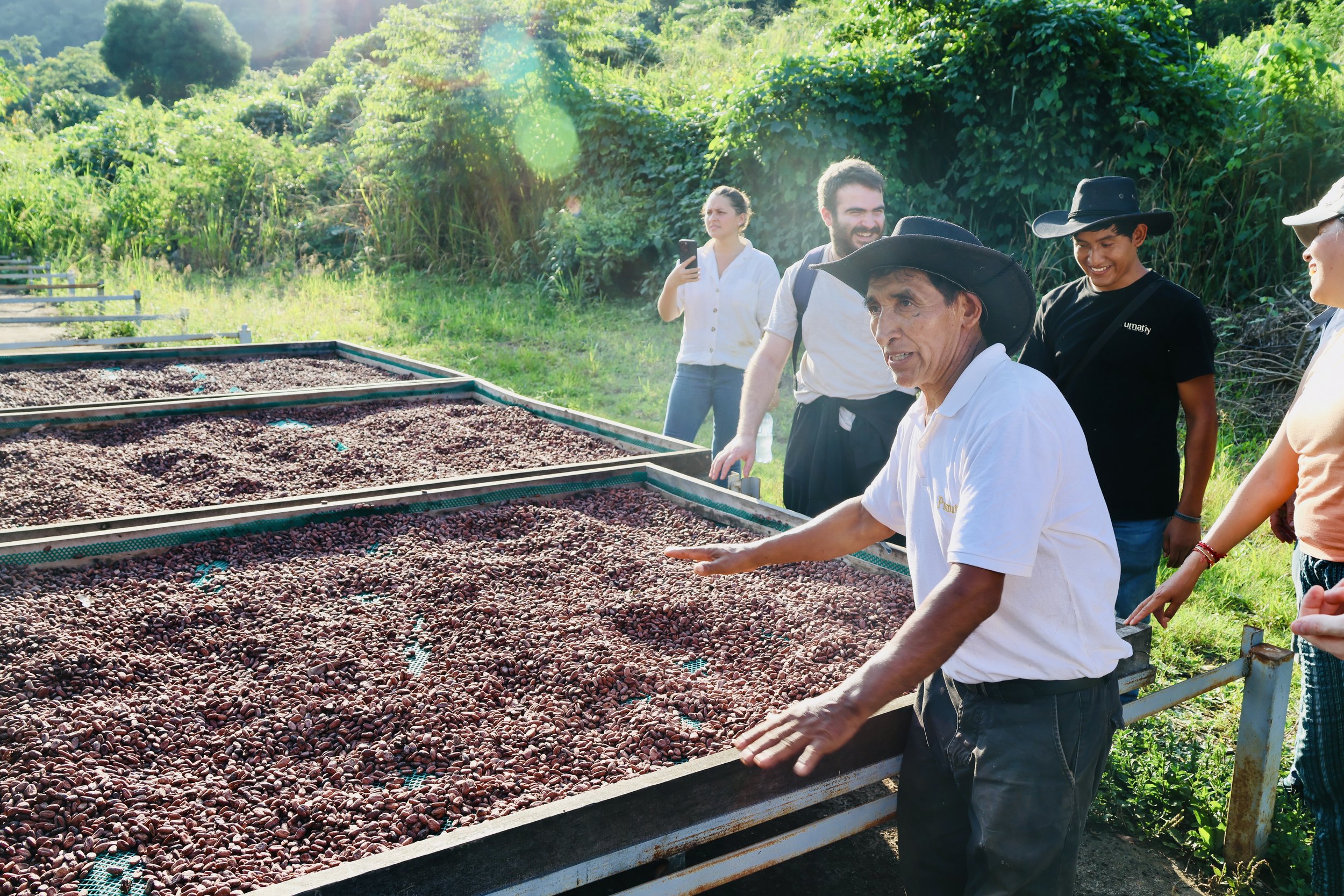
Our CHOCOLATE
SOURCING & PROCESS
-
ROOTED IN HERITAGE
Our cacao comes from South America, honoring our founder’s Colombian roots and our commitment to ethical chocolate-making. We partner with trusted suppliers who ensure quality and fair wages for farmers.
-

COLOMBIAN CACAO
We source our Colombian beans from the Chigorodó region through Cacaitos, a supplier dedicated to direct trade practices. These organically grown beans are the foundation of most of our bars, bringing rich, complex flavors to every bite.
-
PERUVIAN CACAO
Our Peruvian cacao, sourced through Cacao Life, highlights the incredible variety of South American chocolate. Aaron personally met with farmers and co-op owners in Cusco, capturing the spirit of small-batch craftsmanship in every bar.
-

SWEETENED WITH CARE
We use organic cane sugar from Brazil, sourced from Global Organics. This ensures that every bar is made with ingredients that are as respectful to the planet as they are to your taste buds.
What does ‘Bean to Bar’ mean?
"Bean to Bar" is a standard term in the chocolate world, meaning we’re part of the entire process starting with raw cacao beans from our trusted suppliers that we roast, refine, and mold into rich, handcrafted chocolate, right here in-house. Scroll down for a deep dive into our process.
-

1. Cocoa Tree and Pods
An evergreen tree that grows about 20 degrees north and south of the equator. This tree produces cocoa pods. These pods are what eventually become chocolate.
-

2. Fermentation Boxes
If you open a cacao pod, you’ll find a slimy mucus covering little cocoa beans. The fruit and beans are scooped out and placed into the fermentation boxes made from wood. The beans are then covered with banana leaves, trapping all the local bacteria in the air in the box. This allows fermentation to occur, the first step in flavor development!
-

3. Drying
After 5 – 7 days of fermentation, the beans will be raked out onto large drying beds so the excess fruit will evaporate.
-

4. Bags
Beans are placed into large burlap sacks so they can safely make the journey from South America to our factory in Seattle.
-

5. Roasting
Roasting is a key step in flavor development. We roast our beans in a small convection oven. Since each type of cacao is unique, we roast our Colombian and Peruvian beans with completely different roast curves.
-

6. Winnowing
The next step is to remove the husk of the cocoa bean. Our Winnower crushes the beans into pieces and uses vacuums to remove the husks, leaving us with tiny cocoa nibs!
-

7. Milling
Time to pulverize! We toss our nibs into our large stone grinders and, over a 24-48 hours period, the nibs will be pulverized into a liquid form. We add sugar halfway through that process, giving us liquid chocolate!
-

8. Tempering and Depositing
The final steps are to temper the chocolate (come take a class, and we’ll tell you all about that), add any extra fun inclusion, and then deposit the liquid chocolate into our molds.
-

9. Bar Mold
After letting that chocolate cool and solidify for a short period of time - you got a chocolate bar, baby!
We’ve got bars.
Online web store, coming soon!


